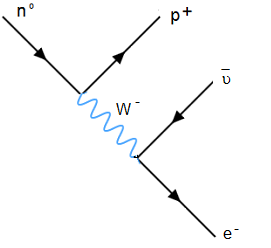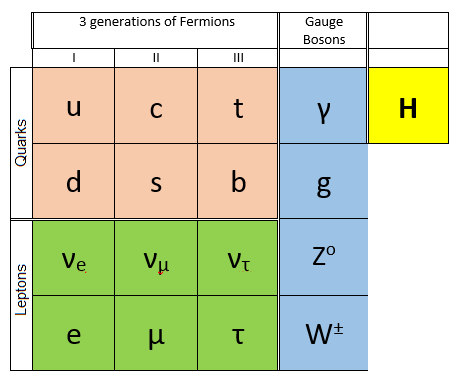 Matter is vast and varied throughout the universe. Yet, zoom in enough and this complex story has a simple core - the Standard Model.
Matter is vast and varied throughout the universe. Yet, zoom in enough and this complex story has a simple core - the Standard Model.

Particles interact and experience forces due to the transfer of exchange particles. These interactions can be represented by diagrams.
Key Concepts
Photons are the exchange particles associated with the electromagnetic force. A photon is a wave packet that carries an energy that is proportional to its frequency:
\(E=hf\)
Virtual photons only exist between particles, not interacting with anything else. They exist for a short time without breaking the law of conservation of energy.
Heisenberg's uncertainty principle states that, if the photon exists for only a short time Δt, then it can have energy \(\Delta E\Delta t\geq {h\over 4 \pi}\) without violating the law of conservation of energy. The shorter the time, the higher the energy.
Protons and neutrons
Protons and neutrons are affected by the strong force:
- Both have masses about 900 MeVc-2
- The proton has charge +e and the neutron charge 0
- Both have spin \(1\over 2\)
Electrons
Electrons are affected by the electric force:
- Mass \(\approx\) 0.5 MeVc-2
- Charge -e
- Spin \(1\over 2\)
Neutrinos
Neutrinos are affected by weak force:
- Mass \(\approx\) 0
- Charge 0
- Spin \(1\over 2\)
Pions
Pions are affected by strong force:
- Mass \(\approx\) 200 MeVc-2
- Charge -e
- Spin 0
Photons
Photons take part in electromagnetic interactions:
- Mass 0
- Charge 0
- Spin 1
Hadrons
Hadron is a collective term for heavy particles that interact with the strong force:
- proton
- neutron
- pion
Baryons are a sub-set of hadrons containing 3 constituent quarks:
- proton
- neutron
Mesons are a sub-set of hadrons containing 2 constituent quarks, i.e. pion.
How much of Structure of matter have you understood?


 Here an electron emits a photon.
Here an electron emits a photon.



 In any interaction lepton number must be conserved.
In any interaction lepton number must be conserved.





 Twitter
Twitter  Facebook
Facebook  LinkedIn
LinkedIn